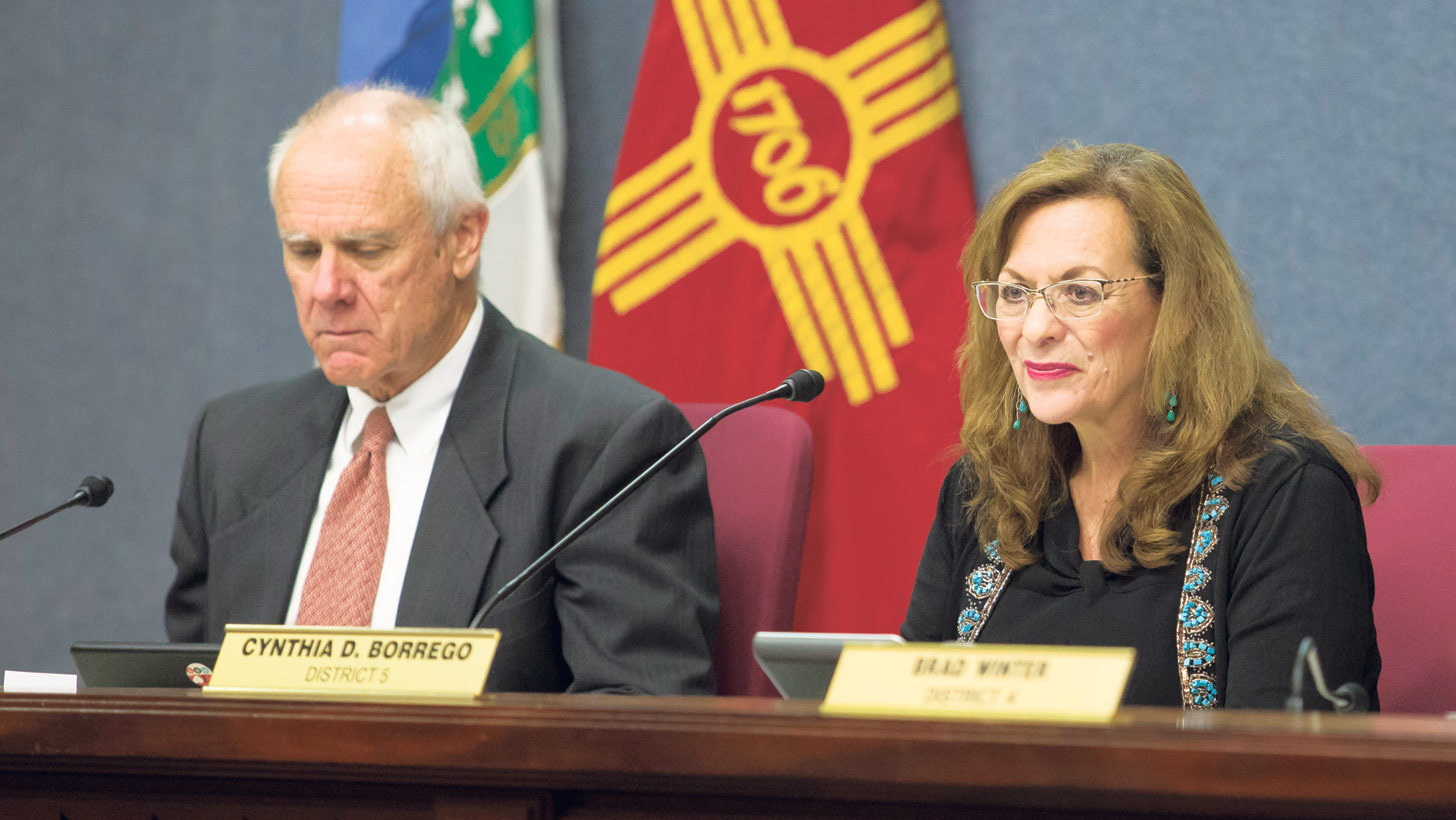Cruise On, Maybe
Several business owners, car enthusiasts and cruising fans spoke up to the Council to say it is time to take the brakes off taking cultural slow spins down Central Avenue.Existing law essentially makes a Sunday afternoon slow car ride through Downtown a crime, so Councilors Klarissa Peña and Isaac Benton sponsored a measure that would form a task force to look at promoting responsible car cruising. Then the council could repeal the ordinance that allows police to ticket those cruising, citing such activities as a threat to public safety by creating traffic congestion through “repetitive, unnecessary driving.” Councilor Peña who says she is a part of the cruising community, said taking a dawdling ride down Route 66 in a cool car is a part of the city’s culture and tradition. It’s a slice of pride for some. She pointed out that the Smithsonian Institute has a classic lowrider car on display as part of New Mexico’s history and culture, therefore Albuquerque should not criminalize it. Another speaker said the cars, lowrider or classic, are rolling pieces of artwork. This prompted Councilor Benton to take a trip down memory lane to the first time he encountered Burque cruisers at the long-gone San Gabriel Park. He said he was sure there is a way to protect the residents and businesses Downtown, and allow the many cruising fans to do their thing.Newly seated Westside Councilor Cynthia Borrego, who grew up in lowrider capital Española, said she was on board for a cruise to tweak the law. Public comments stressed that cruising in and of itself is not a crime. “We do everything we can to make this a positive experience,” said Lorenzo Otero. Otero went on to say that cruising brings people and families together in a positive way and “is not a Chicano thing or a white thing or a black thing or a brown thing—it is an us thing.” The measure passed unanimously.Wanna Fight?
A couple of attorneys showed up to urge the city to pursue litigation against big opioid-producing pharmaceutical companies. Pia Salazar from the local law firm of Salazar, Sullivan and Jasionowski urged the councilors to join the nationwide wave of lawsuits against big pharmaceutical corporations. After a sobering presentation on the opioid epidemic, not only here in New Mexico but across the country, Salazar said the opioid addiction sucks away city and private resources and raises the crime rate and homelessness. Salazar urged the council to issue a request for a proposal to make sure the city of Albuquerque is well represented in this nationwide wave of opioid litigation. “Try to end this process of addiction and hopefully recover back some of our losses and put an end to it in our community,” Salazar said. The Bernalillo County Commission recently decided to join the wave of national lawsuits against big opioid manufacturers. Councilors agreed to explore and discuss with the administration how to move forward with this idea. “We need to recognize that these issues impact all of us,” Councilor Borrego said. Councilor Diane Gibson summed things up with, “We can’t just keep allowing people to kill themselves.”Salazar said lawsuits are handled on a contingency basis and the city would not have to front the costs of the litigation. As recently reported by CBS’ “60 minutes,” Big Pharma targets poorer and browner communities like those in southern Colorado and northern New Mexico, because it is all about profit.Move Along
Councilors made it illegal to just hang out on the new Albuquerque Rapid Transit stations without intending to ride it. Also, there will be no smoking on the station platforms. But to be fair, pedestrians who must use the station to cross Central Avenue can be on the platform long enough to walk across it. Remember, there are plenty of cameras on the platforms to catch loiterers, smokers and others breaking the laws.Paying for ART
Councilor Pat Davis gave new city Chief Operations Officer Lawrence Rael his debut before the new Council when he asked about the Albuquerque Rapid Transit funding. Davis said he was following up on a media report about the federal funding for the project not being locked down.Rael said they are still in the process of doing a broad overview of the project but it is his understanding that federal transportation department has agreed to reimburse the city $75 million; but he said, there is not a signed contract with the feds to reimburse. Rael said the unofficial plan has the money for reimbursements coming to the city in two chunks: $50 million in the first year and $25 million in the second year.Rael said the entire project stretching along Central from Coors to Louisiana will cost roughly $135 million—with $119 million of that being attributed to the actual rapid transit project. Most of the project costs have already been paid out. “The problem is the city fronted the money to build the project,” Rael told the Council. He said this is a challenge, especially with the current political situation in Washington D.C. He assured the council that after the holidays, the Keller administration will be working on getting the feds to sign an official agreement.Send your comments about the City Council to carolyn@alibi.com.
The next meeting Wednesday, Jan. 3, 5pmVincent E. Griego Chambers Albuquerque/Bernalillo County Government Center1 Civic Plaza NWView it on GOV TV 16 or at cabq.gov/govtv




